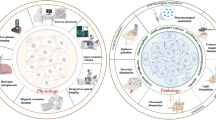We performed a complex study of the dependence of immediate reaction of catalytic subunits in mitochondrial enzymes (NDUFV2, SDHA, Cyt b, COX1, and ATP5A) in rat cerebral cortex (the most hypoxia-sensitive tissue) on the severity and duration of hypoxia in vivo and the role of individual resistance of rats to oxygen deficiency in this process. Three types of responses to hypoxia were revealed. The immediate response of mitochondria to oxygen deficiency appeared after its drop by 30-33% relatively to normal atmosphere level. It manifested in up-regulation of NAD-dependent oxidation, i.e., activation of respiratory chain complex I. Further decrease in oxygen concentration by 50% reprogrammed the work of respiratory chain via activation of respiratory chain complex II in parallel with down-regulation of the electron transport function of the respiratory chain complex I. This response was optimal for the expression of adaptation genes and for the formation of immediate tolerance of rats to hypoxia. The greatest drop of oxygen concentration by 60-62% reversed the Krebs cycle promoting recovery of the electron transport function of respiratory chain complex I. Despite this, the energy efficiency of the respiratory chain and the potency to mobilize the rapid adaptation mechanisms degraded due to abnormalities in cytochrome segment of the respiratory chain.
Similar content being viewed by others
References
Dudchenko AM, Chernobaeva GN, Belousova VV, Vlasova IG, Luk’yanova LD. Bioenergetic parameters of the brain in rats with different resistance to hypoxia. Bull. Exp. Biol. Med. 1993;115(3):263-267.
Eshchenko ND, Vol’skii GG. Evaluation of succinic acid content and succinate dehydrogenase activity. Methods of biochemical studies (lipid and energy metabolism). Prokhorova M. I., ed. Leningrad, 1982. Russian.
Kirova YuI. Role of the glutathione system in regulation of redox status in the rat cerebral cortex under hypoxia. Patol. Fiziol. Eksp. Ter. 2014;58(4):40-47. Russian.
Kondrashova MN, Maevskii EI, Babayan GV, Saakyan IR, Akhmerov RN. Adaptation to hypoxia by switching metabolism to conversion of succinic acid. Mitochondria. Biochemistry and ultrastructure. Moscow, 1973. P. 112-129. Russian.
Luk’yanova LD. Bioenergetic hypoxia: Definition, mechanisms, and methods of correction. Bull. Exp. Biol. Med. 1997;124(3):835-843.
Lukyanova LD. Current issues of adaptation to hypoxia. Signal mechanisms and their role in system regulation. Patol. Fiziol. Eksp. Ter. 2011;55(1):3-19. Russian.
Lukyanova LD, Dudchenko AM, Tsybina TA, Germanova EL, Tkachuk EN, Erenburg IV. Effect of intermittent normobaric hypoxia on kinetic properties of mitochondrial enzymes. Bull. Exp. Biol. Med. 2008;144(6):795-801.
Maevskii EI, Grishina EV, Rozenfel’d AS, Bogdanova LA, Kondrashova MN. Modern problems of physiology and pathology of digestion. Ross. Zh. Gastroenterol., Gepatol., Koloproktol. 2001;11(4):22-28. Russian.
Pavlik LL, Mikheeva IB, Al’-Mugkhrabi YM, Berest VP, Kirova YI, Germanova EL, Luk’yanova LD, Mironova GD. Specific Features of Immediate Ultrastructural Changes in Brain Cortex Mitochondria of Rats with Different Tolerance to Hypoxia under Various Modes of Hypoxic Exposures. Bull. Exp. Biol. Med. 2018;164(3):376-381.
Luk’yanova LD, Romanova VE, Chernobaeva GN. Oxidative phosphorylation in brain mitochondria of rats differing in their sensitivity to hypoxia. Bull. Exp. Biol. Med. 1991;112(1):962-965.
Chandel NS, Schumacker PT. Cellular oxygen sensing by mitochondria: old questions, new insight. J. Appl. Physiol. (1985). 2000;88(5):1880-1889.
Das J. The role of mitochondrial respiration in physiological and evolutionary adaptation. Bioessays. 2006;28(9):890-901.
Lukyanova LD. Mitochondria signaling in adaptation to hypoxia. Int. J. Physiol. Pathophysiol. 2014;5(4):363-381.
Lukyanova LD, Kirova YI. Mitochondria-controlled signaling mechanisms of brain protection in hypoxia. Front. Neurosci. 2015;9:320. doi: https://doi.org/10.3389/fnins.2015.00320.
Zhang X, Huang CJ, Nazarian R, Ritchie T, de Vellis JS, Noble EP. Isolation of nuclear protein from human brain. Biothechniques. 1997;22(5):848-850.
Author information
Authors and Affiliations
Corresponding author
Additional information
Translated from Byulleten’ Eksperimental’noi Biologii i Meditsiny, Vol. 166, No. 10, pp. 410-416, October, 2018
Rights and permissions
About this article
Cite this article
Luk’yanova, L.D., Kirova, Y.I. & Germanova, E.L. Peculiarities of Immediate Response of Respiratory Chain Enzymes in Rat Cerebral Cortex to Hypoxia. Bull Exp Biol Med 166, 426–431 (2019). https://doi.org/10.1007/s10517-019-04365-8
Received:
Published:
Issue Date:
DOI: https://doi.org/10.1007/s10517-019-04365-8




